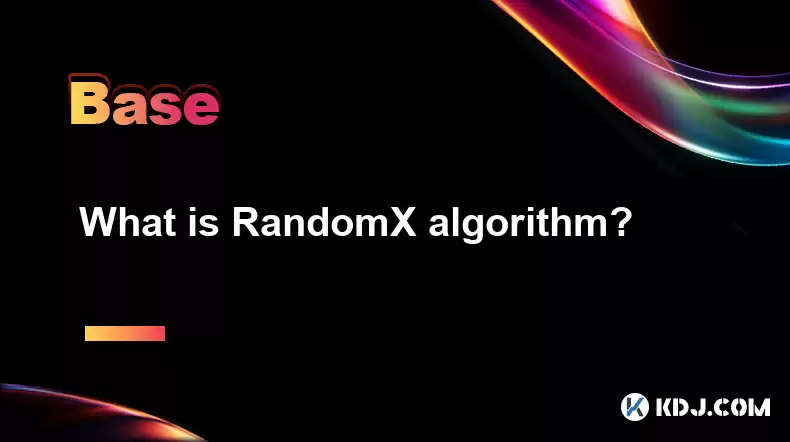-
 Bitcoin
Bitcoin $114500
-0.31% -
 Ethereum
Ethereum $3648
1.11% -
 XRP
XRP $3.033
-0.27% -
 Tether USDt
Tether USDt $0.9999
-0.01% -
 BNB
BNB $758.5
-0.32% -
 Solana
Solana $167.5
1.48% -
 USDC
USDC $0.9998
-0.02% -
 TRON
TRON $0.3331
0.74% -
 Dogecoin
Dogecoin $0.2039
0.25% -
 Cardano
Cardano $0.7419
-0.46% -
 Hyperliquid
Hyperliquid $39.21
2.66% -
 Stellar
Stellar $0.4049
-1.95% -
 Sui
Sui $3.483
-0.56% -
 Bitcoin Cash
Bitcoin Cash $570.8
2.89% -
 Chainlink
Chainlink $16.67
-0.57% -
 Hedera
Hedera $0.2470
-1.57% -
 Ethena USDe
Ethena USDe $1.001
0.00% -
 Avalanche
Avalanche $22.36
1.52% -
 Litecoin
Litecoin $123.4
4.35% -
 UNUS SED LEO
UNUS SED LEO $8.989
0.09% -
 Toncoin
Toncoin $3.324
-2.40% -
 Shiba Inu
Shiba Inu $0.00001219
-1.30% -
 Uniswap
Uniswap $9.811
2.54% -
 Polkadot
Polkadot $3.662
-0.07% -
 Monero
Monero $295.5
-3.85% -
 Dai
Dai $1.000
0.01% -
 Bitget Token
Bitget Token $4.345
0.24% -
 Cronos
Cronos $0.1380
0.95% -
 Pepe
Pepe $0.00001044
-1.14% -
 Ethena
Ethena $0.5981
-4.24%
What is RandomX algorithm?
RandomX, Monero's PoW algorithm, enhances network security and decentralization by favoring CPUs and GPUs over ASICs, promoting a more egalitarian mining environment.
Apr 12, 2025 at 10:21 am

The RandomX algorithm is a proof-of-work (PoW) consensus mechanism designed specifically for the cryptocurrency Monero (XMR). It was introduced to enhance the security and decentralization of the Monero network by making it more resistant to specialized mining hardware, such as ASICs (Application-Specific Integrated Circuits). Instead, RandomX aims to be more accessible to general-purpose CPUs and GPUs, thereby promoting a more egalitarian mining environment.
History and Development of RandomX
The development of RandomX was driven by the need to address the centralization risks posed by ASIC miners. Monero's developers recognized that ASICs could potentially dominate the network, leading to a concentration of mining power in the hands of a few. To counteract this, they sought to create an algorithm that would be computationally intensive for ASICs but manageable for CPUs and GPUs. RandomX was officially implemented in the Monero network with the November 2019 hard fork, replacing the previous CryptoNight algorithm.
Key Features of RandomX
RandomX is characterized by several key features that distinguish it from other PoW algorithms:
- CPU and GPU Friendliness: RandomX is designed to be efficiently executed on general-purpose CPUs and GPUs. This is achieved through the use of complex memory-hard functions that are difficult for ASICs to optimize.
- Memory-Hardness: The algorithm requires a significant amount of memory to operate effectively, which makes it challenging for ASICs to be cost-effective.
- Randomized Execution: RandomX uses a randomized execution path, which adds an extra layer of unpredictability and makes it harder for ASICs to gain a performance advantage.
- High Computational Complexity: The algorithm's design ensures that it is computationally intensive, further deterring the development of ASICs.
How RandomX Works
RandomX operates by generating a random program that is executed on the miner's hardware. This program is derived from the block header and is unique for each block, ensuring that miners cannot pre-compute solutions. Here's a detailed look at how RandomX functions:
- Input Generation: The block header is used to generate a seed, which is then used to create a random program.
- Program Execution: The generated program is executed on the miner's hardware. This program consists of a series of instructions that are designed to be memory-intensive and computationally complex.
- Output Verification: The output of the program is used to generate a hash, which is then verified against the target difficulty. If the hash meets the difficulty requirement, the block is considered valid.
Benefits of RandomX for Monero
The implementation of RandomX has brought several benefits to the Monero network:
- Increased Decentralization: By making mining more accessible to a wider range of hardware, RandomX helps to distribute mining power more evenly across the network.
- Enhanced Security: The algorithm's resistance to ASICs reduces the risk of a 51% attack, as it is more difficult for a single entity to control a majority of the network's mining power.
- Fairness: RandomX promotes a more level playing field for miners, as it does not favor those with access to specialized hardware.
Mining with RandomX
Mining Monero using the RandomX algorithm is straightforward for those with compatible hardware. Here are the steps to start mining:
- Choose Your Hardware: Ensure you have a CPU or GPU that is compatible with RandomX. Most modern CPUs and GPUs should work well.
- Select a Mining Software: There are several mining software options available for RandomX, such as XMRig and MoneroSpv. Download and install the software of your choice.
- Configure the Software: Set up the mining software with your Monero wallet address and the pool you wish to mine with. Here's how to configure XMRig:
- Open the XMRig configuration file (usually named
config.json). - Enter your Monero wallet address in the
"user"field. - Specify the mining pool URL in the
"url"field. - Save the configuration file.
- Open the XMRig configuration file (usually named
- Start Mining: Launch the mining software and begin mining. Monitor your mining performance and adjust settings as needed.
Performance and Efficiency
The performance and efficiency of mining with RandomX can vary depending on the hardware used. CPUs generally offer lower hash rates but are more energy-efficient, while GPUs can provide higher hash rates at the cost of increased power consumption. Here are some general guidelines:
- CPU Mining: CPUs are well-suited for RandomX due to the algorithm's design. They can achieve hash rates ranging from a few hundred to a few thousand hashes per second (H/s), depending on the model.
- GPU Mining: GPUs can achieve significantly higher hash rates, often in the range of tens of thousands to hundreds of thousands of H/s. However, they consume more power, which can impact overall profitability.
Frequently Asked Questions
Q: Can I mine Monero with an ASIC using RandomX?
A: While it is technically possible to develop an ASIC for RandomX, the algorithm's design makes it economically unfeasible. The high memory requirements and randomized execution path make it difficult for ASICs to achieve a significant performance advantage over CPUs and GPUs.
Q: How does RandomX affect the overall security of the Monero network?
A: RandomX enhances the security of the Monero network by making it more resistant to 51% attacks. By promoting a more decentralized mining environment, it reduces the likelihood of any single entity gaining control over the majority of the network's mining power.
Q: Is it possible to mine Monero with a mobile device using RandomX?
A: While it is theoretically possible to mine Monero on a mobile device, the performance would be extremely low due to the limited processing power and memory of mobile hardware. It is not a practical or profitable approach.
Q: How often does Monero update its mining algorithm?
A: Monero's developers periodically review and update the mining algorithm to maintain the network's security and decentralization. The transition to RandomX in 2019 was one such update, and future updates may be implemented as needed to address emerging threats and technological advancements.
Disclaimer:info@kdj.com
The information provided is not trading advice. kdj.com does not assume any responsibility for any investments made based on the information provided in this article. Cryptocurrencies are highly volatile and it is highly recommended that you invest with caution after thorough research!
If you believe that the content used on this website infringes your copyright, please contact us immediately (info@kdj.com) and we will delete it promptly.
- Metamask, Altcoins, and the Move: Is Cold Wallet the Future?
- 2025-08-06 04:30:12
- BlockDAG, BNB, and SEI: What's Hot and What's Not in the Crypto World
- 2025-08-06 04:50:13
- Coinbase (COIN) Stock Trading Lower: Navigating the Crypto Equity Reset
- 2025-08-06 04:35:13
- Meme Coins Skyrocket: Is Dogecoin About to Be Dethroned?
- 2025-08-06 03:50:13
- Tether's On-Chain Surge: USDT Dominates and Drives Blockchain Fees
- 2025-08-06 02:50:13
- Bitcoin, Treasury, Country: Bolivia Follows El Salvador's Lead, While TON Strategy Co. Makes Waves
- 2025-08-06 03:50:13
Related knowledge

What is the difference between CeFi and DeFi?
Jul 22,2025 at 12:28am
Understanding CeFi and DeFiIn the world of cryptocurrency, CeFi (Centralized Finance) and DeFi (Decentralized Finance) represent two distinct financia...

How to qualify for potential crypto airdrops?
Jul 23,2025 at 06:49am
Understanding What Crypto Airdrops AreCrypto airdrops refer to the distribution of free tokens or coins to a large number of wallet addresses, often u...

What is a crypto "airdrop farmer"?
Jul 24,2025 at 10:22pm
Understanding the Role of a Crypto 'Airdrop Farmer'A crypto 'airdrop farmer' refers to an individual who actively participates in cryptocurrency airdr...

What is the difference between a sidechain and a Layer 2?
Jul 20,2025 at 11:35pm
Understanding the Concept of SidechainsA sidechain is a separate blockchain that runs parallel to the main blockchain, typically the mainnet of a cryp...

What is the Inter-Blockchain Communication Protocol (IBC)?
Jul 19,2025 at 10:43am
Understanding the Inter-Blockchain Communication Protocol (IBC)The Inter-Blockchain Communication Protocol (IBC) is a cross-chain communication protoc...

How does sharding improve scalability?
Jul 20,2025 at 01:21am
Understanding Sharding in BlockchainSharding is a database partitioning technique that is increasingly being adopted in blockchain technology to enhan...

What is the difference between CeFi and DeFi?
Jul 22,2025 at 12:28am
Understanding CeFi and DeFiIn the world of cryptocurrency, CeFi (Centralized Finance) and DeFi (Decentralized Finance) represent two distinct financia...

How to qualify for potential crypto airdrops?
Jul 23,2025 at 06:49am
Understanding What Crypto Airdrops AreCrypto airdrops refer to the distribution of free tokens or coins to a large number of wallet addresses, often u...

What is a crypto "airdrop farmer"?
Jul 24,2025 at 10:22pm
Understanding the Role of a Crypto 'Airdrop Farmer'A crypto 'airdrop farmer' refers to an individual who actively participates in cryptocurrency airdr...

What is the difference between a sidechain and a Layer 2?
Jul 20,2025 at 11:35pm
Understanding the Concept of SidechainsA sidechain is a separate blockchain that runs parallel to the main blockchain, typically the mainnet of a cryp...

What is the Inter-Blockchain Communication Protocol (IBC)?
Jul 19,2025 at 10:43am
Understanding the Inter-Blockchain Communication Protocol (IBC)The Inter-Blockchain Communication Protocol (IBC) is a cross-chain communication protoc...

How does sharding improve scalability?
Jul 20,2025 at 01:21am
Understanding Sharding in BlockchainSharding is a database partitioning technique that is increasingly being adopted in blockchain technology to enhan...
See all articles

























































































